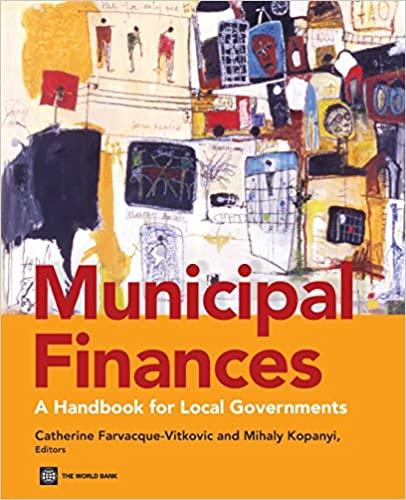Question 5 (14 marks) Mike works as an investment analyst in OBECO, a giant "funds of funds company with over $2 trillion assets under management (AUM). OBECO diversifies its $2 trillion AUM among a number of professional managers' actively managed funds. Thus, the overall holdings of OBECO resembles a well-diversified portfolio with the same risk-return profile as that of the market portfolio Mike is preparing for a meeting with his directors, Jennifer and Harry, to discuss whether their firm (OBECO) should allocate $20 million to the two actively managed funds, BRIGHTON and FULLERTON, respectively. Both funds are not in the current holdings of OBECO. To evaluate their fund performance, Mike gathered the monthly data over the past five years, and has prepared the following descriptive statistics for the two funds, the market portfolio (denoted as Mkt), and the risk-free asset (denoted as RF). See below: Table of descriptive statistics of monthly returns BRIGHTON FULLERTON Mkt RF Mean Return (in %) 1.70 1.30 1.30 0.10 Standard Deviation of Return (in %) 2.90 3.00 2.00 0 Mike believes that the excess returns of both funds are influenced by changes in excess returns of the market portfolio (denoted as Mkt-RF), so he uses the single-factor model by regressing the excess return of the fund on that of the market. He obtains the following regression output for the two funds: Table of the regression output for the fund BRIGHTON: Coefficients Standard Error t-Statistics p-value Intercept 0.2080 0.0701 2.9672 0.0030 Mkt-RF 1.1600 0.3386 3.4259 0.0006 Table of the regression output for the fund FULLERTON: Coefficients Standard Error t-Statistics p-value Intercept 0.4800 0.2969 1.6167 0.1059 Mkt-RF 0.6000 0.1386 4.3290 0.0000 a). Based on the information above, select the more appropriate performance measure between Sharpe ratio and Treynor ratio to explain whether OBECO should allocate $20 million to FULLERTON or not? (4 marks) b). During the meeting, Mike proposes that they should also allocate investments to BRIGHTON. He argues the fund manager of BRIGHTON is able to generate superior profits in the future, which is evidenced by the regression output in the table that BRIGHTON generated strong positive alphas relative to the benchmark during the past five years. He also adds that the large alpha generated by BRIGHTON is a clear indication of market inefficiency. However, Jennifer disagrees on Mike's proposal and arguments. Based on her knowledge of mutual fund performances and market efficiency, Jennifer believes Mike's arguments have several flaws and there are caveats in the regression analysis performed by Mike. Provide two valid reasons to explain why we should refute Mike's proposal and arguments. (Your answer should be no longer than 200 words) (4 marks) Question 5 (14 marks) Mike works as an investment analyst in OBECO, a giant "funds of funds company with over $2 trillion assets under management (AUM). OBECO diversifies its $2 trillion AUM among a number of professional managers' actively managed funds. Thus, the overall holdings of OBECO resembles a well-diversified portfolio with the same risk-return profile as that of the market portfolio Mike is preparing for a meeting with his directors, Jennifer and Harry, to discuss whether their firm (OBECO) should allocate $20 million to the two actively managed funds, BRIGHTON and FULLERTON, respectively. Both funds are not in the current holdings of OBECO. To evaluate their fund performance, Mike gathered the monthly data over the past five years, and has prepared the following descriptive statistics for the two funds, the market portfolio (denoted as Mkt), and the risk-free asset (denoted as RF). See below: Table of descriptive statistics of monthly returns BRIGHTON FULLERTON Mkt RF Mean Return (in %) 1.70 1.30 1.30 0.10 Standard Deviation of Return (in %) 2.90 3.00 2.00 0 Mike believes that the excess returns of both funds are influenced by changes in excess returns of the market portfolio (denoted as Mkt-RF), so he uses the single-factor model by regressing the excess return of the fund on that of the market. He obtains the following regression output for the two funds: Table of the regression output for the fund BRIGHTON: Coefficients Standard Error t-Statistics p-value Intercept 0.2080 0.0701 2.9672 0.0030 Mkt-RF 1.1600 0.3386 3.4259 0.0006 Table of the regression output for the fund FULLERTON: Coefficients Standard Error t-Statistics p-value Intercept 0.4800 0.2969 1.6167 0.1059 Mkt-RF 0.6000 0.1386 4.3290 0.0000 a). Based on the information above, select the more appropriate performance measure between Sharpe ratio and Treynor ratio to explain whether OBECO should allocate $20 million to FULLERTON or not? (4 marks) b). During the meeting, Mike proposes that they should also allocate investments to BRIGHTON. He argues the fund manager of BRIGHTON is able to generate superior profits in the future, which is evidenced by the regression output in the table that BRIGHTON generated strong positive alphas relative to the benchmark during the past five years. He also adds that the large alpha generated by BRIGHTON is a clear indication of market inefficiency. However, Jennifer disagrees on Mike's proposal and arguments. Based on her knowledge of mutual fund performances and market efficiency, Jennifer believes Mike's arguments have several flaws and there are caveats in the regression analysis performed by Mike. Provide two valid reasons to explain why we should refute Mike's proposal and arguments. (Your answer should be no longer than 200 words) (4 marks)








